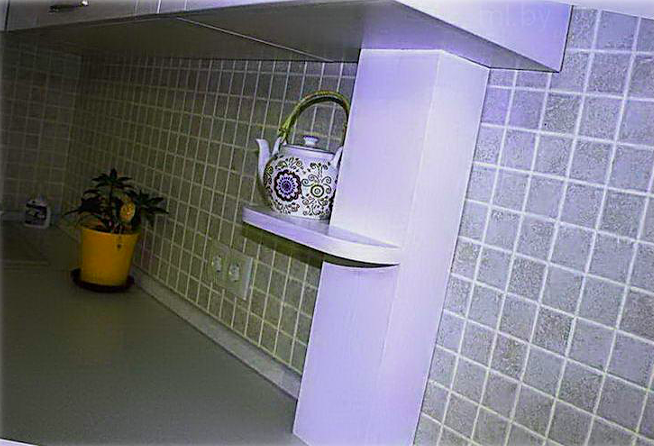It's easy to figure out how to pour salt into the dishwasher. To do this, you need to find a special container with a lid, which is located at the very bottom of the chamber. In this case, the amount can be arbitrary - as a rule, the container is completely filled, after which the agent is evenly consumed. How to fill it up correctly, and which remedy is best suited, is described in detail in this material.
The content of the article
- Appointment of salt
- Composition and principle of action
- Preparatory stage: determination of hardness and adjustment of the softener
- How and how much to add salt: step by step instructions
Appointment of salt
First of all, you need to understand what dishwasher salt is for, since the required amount and frequency of its use depends on it. The main reason is that salt contains substances that make water softer.
In most regions of Russia (including the middle lane, Moscow, the Volga region, the southern regions and the Southern Urals), the water is very hard. This means that quite a lot of calcium carbonate (mineral salt, also called lime) is present in its composition. It is for this reason that you need to understand how much salt to pour into the dishwasher, and which product is better to use.
Hard water is much worse than soft water because it leads to several negative effects:
- scale formation on the heating element;
- the glass of the dishes becomes cloudy;
- parts wear out faster, so repairs will be needed ahead of time.
Composition and principle of action
The composition of salt includes the actual table salt (edible salt), that is, crystalline sodium chloride. The tool is produced in 2 types:
- pills;
- crystals (granules).

In this regard, the question arises, how to replace the salt for the dishwasher. At first glance, it seems that you can pour ordinary table salt into the tray, and there will be the same effect. But the key difference is that edible salt comes in the form of a very fine powder, while dishwasher detergent comes in granules or tablets (pressed). This allows it to dissolve evenly, not clog the filter and not damage the ion exchanger, which is installed in many modern devices.
If we talk about why salt is in the dishwasher, we should describe the principle of its action. By itself, table salt cannot soften water. But it affects the ion exchanger, since it is a source of a large amount of dissolved sodium and chlorine ions. Due to this, the level of rigidity is markedly reduced. That's what dishwasher salt is for.
Preparatory stage: determination of hardness and adjustment of the softener
Before you figure out where to pour salt in the dishwasher, you need to properly set up the softener in the unit. The fact is that the device can work even at high hardness (only 7 levels), but for this it is important to soften the liquid correctly, that is, adjust the softener.
In turn, for this it is necessary to accurately determine the level of hardness, since this determines whether salt should be used, and specifically in what quantities. The indicator could be:
- Soft (the softener is set to position 0 or 1) - in these cases, you should not figure out why you need salt for the dishwasher, since it is not required at this level.
- Medium (softener position 2 to 4).
- Rigid (position 5 to 7).
When figuring out how to use dishwasher salt, you need to properly assess the hardness of the water. Usually this can be done according to the data for each specific region. But if there is no information, you can carry out an independent measurement, including using improvised means:
- Paper strips with an indicator - they are immersed in water, then they are taken out and the color is determined by comparing it with a standard scale. After that, you can understand where to put salt in the Bosch dishwasher, and how to do it correctly.

- With the help of laundry soap - carefully lather a clean, damp rag with a piece. If foam appears in large quantities, then the rigidity is low. If there is very little foam, the indicator is very large.
- You can also navigate by how quickly scale forms in the kettle, on the surface of the boiler and other heating devices. If a plaque appears literally every week, this indicates high rigidity.
How and how much to add salt: step by step instructions
Now you need to figure out which salt is best for the dishwasher, and how to use it correctly. There are several different drugs, all of them are of high quality and affordable price:
- Finish;
- Somat;
- "Synergetic";
- "Salty" and others.
The next step is to decide on the quantity. Salt in the dishwasher can be poured into the tray to the top. Although the specific amount is indicated in the instructions, it is not necessary to strictly adhere to this rule. In fact, the tray is completely filled up, for this an incomplete pack is enough (about 2/3), that is, about 1 kg. The fact is that the product is consumed evenly, so you should not worry about the exact amount.
After it became clear which salt to use for the dishwasher, it is necessary to study in which container to put tablets or granules. To do this, you can use a simple step-by-step instruction:
- Find a special compartment inside the chamber (it is located under the lowest basket for dishes).

- Pour up to 1 liter of water into this tank. This should be done only before the very first use, in other cases this step is skipped.
- Find a hole where to pour dishwasher salt and insert a funnel into it (for convenience, so as not to spill tablets or granules).
- Fill the container almost to the top - usually 2/3 of a pack is enough for this.

- If the grains wake up, you need to remove them and wipe the surface thoroughly.
- Screw on the lid, making sure it fits snugly, without distortion.
Thus, the composition of dishwasher salt is similar to a common food product - NaCl (sodium chloride). This agent does not reduce hardness by itself, but it does provide ionic balance so that the device's ion exchanger works properly. It is he who softens the liquid, which significantly increases the service life of the heating element and other parts.


